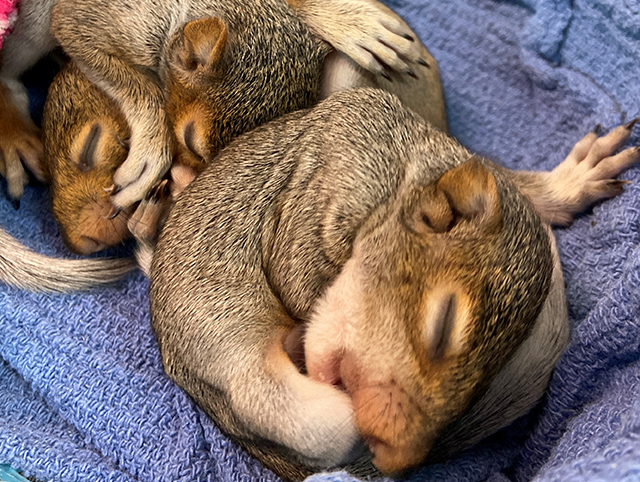 Fallen tree limbs and storm damage got you down? If the recent inclement weather and severe storms are having an impact on your neighborhood, imagine what they are doing to the homes and shelters of our smaller wild neighbors!
Fallen tree limbs and storm damage got you down? If the recent inclement weather and severe storms are having an impact on your neighborhood, imagine what they are doing to the homes and shelters of our smaller wild neighbors!
From downed trees and flooding to high winds and extreme heat, wildlife is feeling the effects of severe weather patterns just as much as humans. The consequences of these storms are clearly seen in the number of animals admitted to the wildlife clinic which are often 4-5 times higher following stormy weather than would be seen on a typical day. Here are some ways you can support your local wildlife before, during, and after severe weather hits.
High winds:
The same soft wood that makes dead trees and boughs appealing to cavity nesting animals like woodpeckers, screech owls, squirrels, and many others, also means those trees are much more likely to fall or be damaged by heavy winds. Installing secure nest boxes on the sides of sturdy living trees gives wildlife a safe place to shelter no matter what weather comes their way.
High temperatures:
Increasing temperatures are hard for wildlife to bear, especially in urban areas where scalding pavement and lack of grassy or shaded areas can make their lives miserable and even dangerous. Plant native trees and shrubs in your yard or neighborhood to provide essential shade and shelter. Bird baths or dishes of water will be readily used by many birds and mammals in the heat of summer and are a great way to safely observe wildlife from home. Just make sure baths are in a semi-sheltered area, are no more than 1-2 inches deep, and are cleaned and filled with fresh water daily to prevent the spread of disease.
Flooding:
Flooding is especially dangerous to mammals and birds who make their nest, den, or burrow on the ground. Baby cottontails are a frequent victim of flooding, as their nests are only shallow depressions in the grass and quickly fill with water in heavy rain. If you know a downpour is in the forecast you can protect rabbit nests by sheltering them with an upside-down wheelbarrow, umbrella, or other covering that will still allow access by the mother. If the nest starts to fill with water, act quickly! Remove the babies from the nest, gently dry them off with a towel and place them in a cardboard box with a heating pad to stay warm. Do not try to feed them but call a wildlife rehabilitator right away for advice on how to reunite them with their mother once the rain stops.
Even if a nest is destroyed by flooding or is blown out of a tree in a storm, it is often possible to reunite the babies with their parents. Keep the displaced animals warm and safe in a cardboard box and call the wildlife clinic for guidance- we can give you instructions for making a replacement nest and reuniting lost babies with mothers. Orphaned birds and mammals quickly become dehydrated during the heat of the day so rapid intervention is important to their survival, and if the babies show any signs of injury they will need professional medical care as soon as possible. Call 215-483-7300x option 2 for assistance with injured or displaced wildlife- we respond to all emergency calls during open hours within 30 minutes or less. For non-emergency wildlife questions, email us at wildlife@schuylkillcenter.org.
By Rebecca Michelin, Wildlife Rehabilitation Consultant
